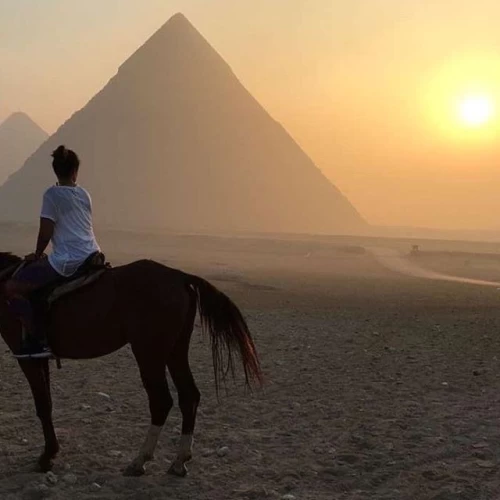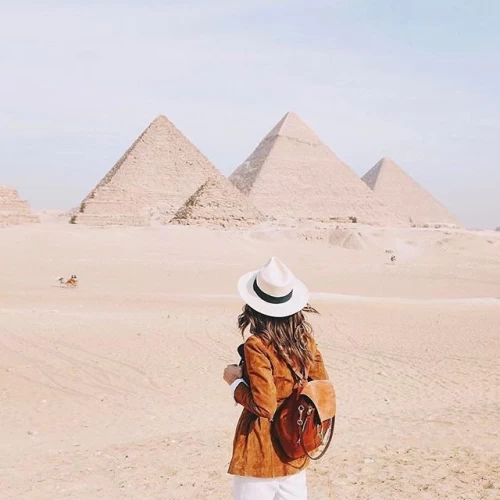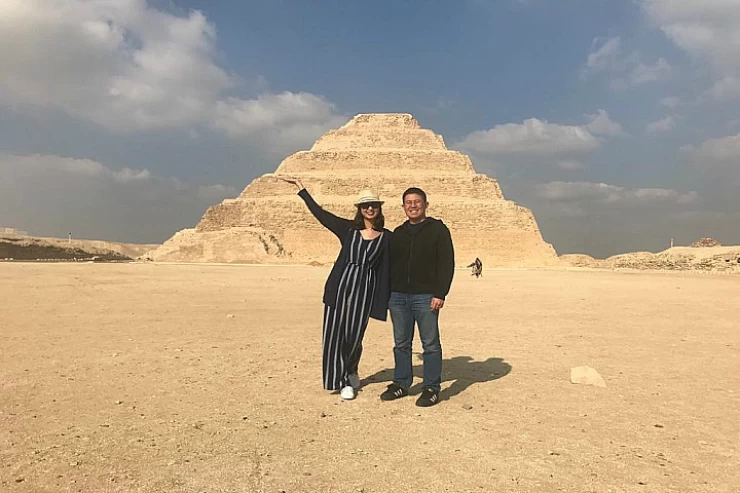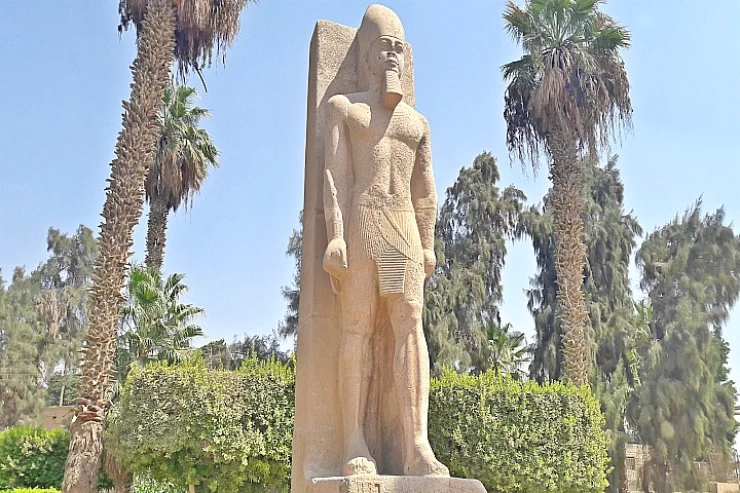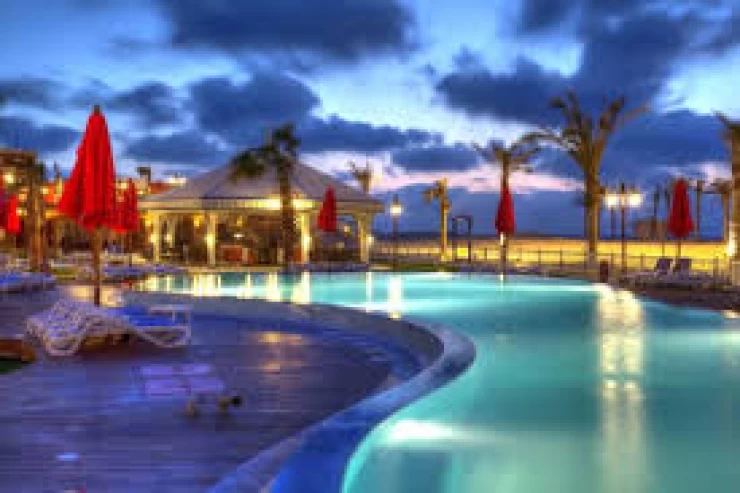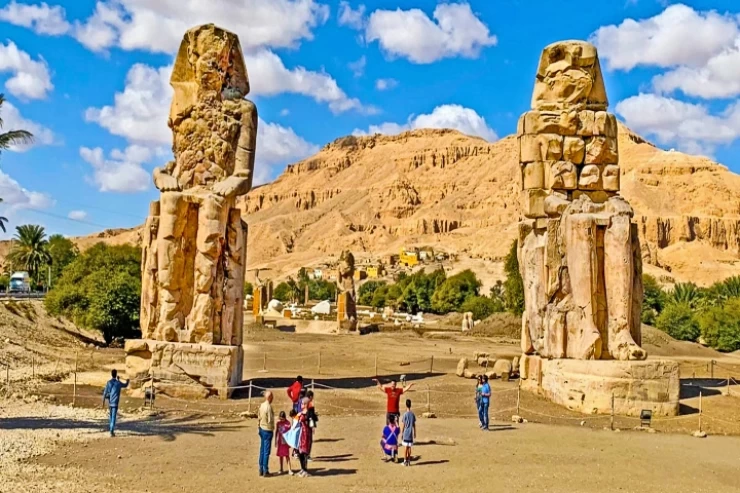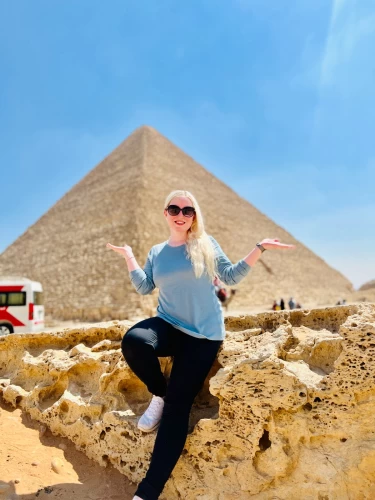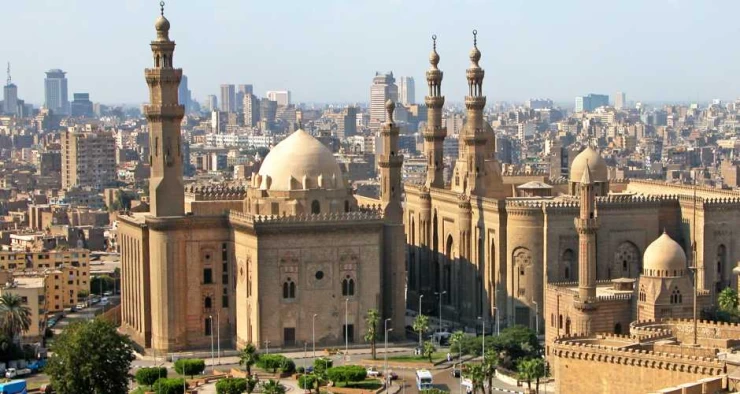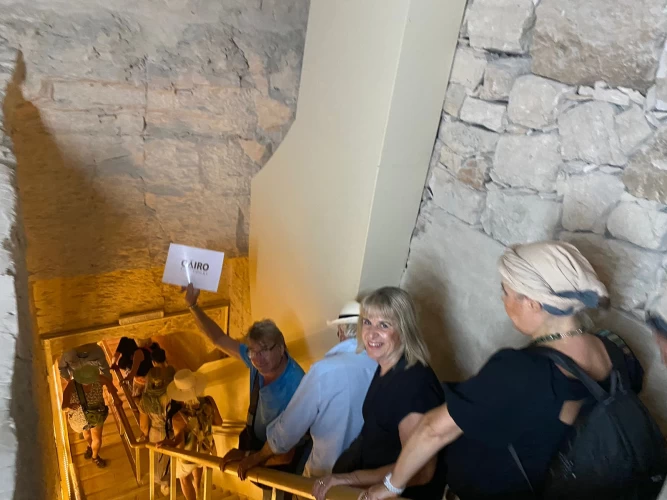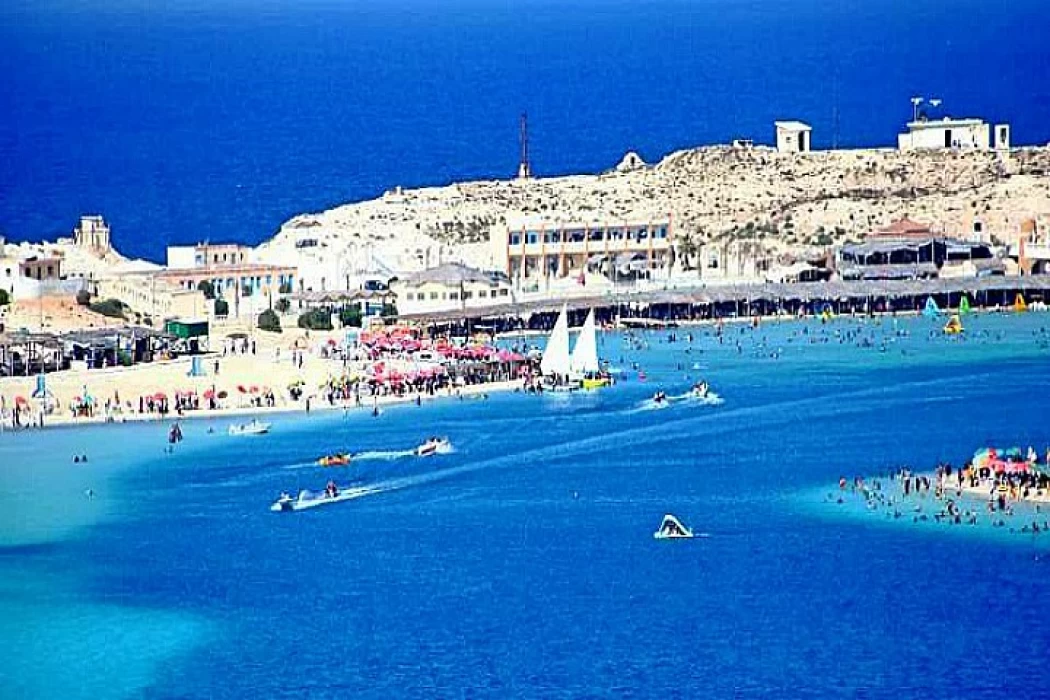
Roman-Era Tomb Uncovered in Marsa Matrouh
A Roman-era tomb in Marsa Matrouh has been uncovered during excavations at the Umm al-Rakham archaeological site in the Marsa Matrouh governorate (northern Egypt). This discovery is a significant addition to the historical attractions of Marsa Matrouh, a city included in many Egypt Travel Packages.
The city of Marsa Matrouh is located on the Mediterranean coast, 290 kilometers west of Alexandria and 524 kilometers from the Egyptian capital Cairo. Egypt Shore Excursions often include this region for travelers looking to explore the coastal beauty and ancient heritage of Egypt.
The discovery was made during excavations carried out by an Egyptian archaeological mission headed by Qutb Fawzy, head of the Central Department of Antiquities of the Sea Face and Sinai. It included two rock-cut tombs of the “Catacomb” style, known in the Roman era, with 29 burial sites, a number of glass jars, carved and decorated sacrificial tables, a statue of a man in a Roman robe, a ram statue, a bust of an unknown woman, and some bronze coins.
It also uncovered “a bathhouse complete with architectural elements, inside which were found reception halls, seating benches for bath users, bathing rooms, cisterns and water drainage places,” Dr. Ayman Ashmawy said. Egypt Day Tours often bring tourists to visit such newly uncovered sites, providing an immersive journey into Egypt’s ancient past.
Which were closed with limestone plugs,” he said. “The burial place of the owner of the tomb was closed by an imaginary door whose sides rested on two columns with relief carving, and in the center was represented by a double-sided door surmounted by a periodic frieze containing tooth decoration and a limestone offering table below it.”
The city of Marsa Matrouh includes a number of archaeological monuments, the most prominent of which is the Temple of Ramses II, discovered by archaeologist Labib Habash in 1942, in addition to the Cleopatra Baths area, which includes some archaeological mounds. According to the Egyptian State Information Service website, it was indicated “the presence of archaeological mounds and rock-cut tombs from the Greco-Roman era in the Sidi Barani area of Matrouh, and other archaeological tombs in Jebel Dakrour and Jebel al-Muta areas, and other ancient mounds that need excavations to reveal their secrets.
Latest Articles
Admin
Aswan Governerate in Egypt
One of Egypt's southern governorates is Aswan Governorate. The city of Aswan serves as its capital. At a latitude of 22 north of the equator (also known as the Tropic of Cancer), it is bounded to the north by the Qena Governorate, to the east by the Red Sea Governorate, to the west by the New Valley Governorate, and to the south by the Republic of Sudan.
Admin
Luxor Governorate Egypt
The capital of the Arab Republic of Egypt is Luxor City, which was once known as "Thebes City" because it served as Egypt's capital during the Pharaonic era. It is situated in the South Upper Egypt region, approximately 670 kilometers from the capital Cairo from the south. It is bordered on the north by Qena Governorate, on the south by Aswan Governorate, on the east by Red Sea Governorate, and on the west by New Valley Governorate.
Admin
History of kafr El Sheikh Governorate
Kafr El Sheikh Governorate is an Egyptian governorate, located in the northernmost part of Egypt in the Nile Delta, with Kafr El Sheikh as its capital. It had a population of 3,172,753 in 2015 and an area of 3,748 km². Its entire area is located north of the delta and overlooks the Mediterranean Sea. The main economic activity of the residents of the governorate is agriculture and fishing, especially the southern lands of the governorate and the lands overlooking the Nile River - Rosetta Branch.
Admin
Egypt's New Administrative Capital
The New Administrative Capital is located between the Cairo-Suez and Cairo-Ain Sokhna roads, 60 km from Cairo and the same distance from Ain Sokhna and Suez. The New Administrative Capital is located on the border of Badr City, in the area between the Cairo-Suez and Cairo-Ain Sokhna roads, just after New Cairo, Mostakbal City and Madinaty.
Admin
Al Gharbia Governorate
Gharbia Governorate is one of the governorates full of archaeological sites, whether they are places or facilities (mosques, churches), as the governorate is a destination for visitors to these places throughout the year, whether they are Egyptians from the different governorates.
Admin
Hamata Islands (Qulaan Archipelago) in Marsa Alam
The Hamata area, south of Marsa Alam in the Red Sea, is one of the most important parts of the Wadi El Gemal Reserve, whether in the desert or the sea. It was named after the sorrel plant, which was distorted to Hamata.






